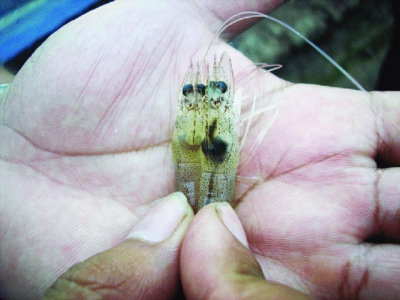A non-medicinal means for shrimp farmers to combat EMS/AHPND
Shrimp fed diets containing FeedKind, a novel microbial protein produced by Calysta, have been shown to be more resistant to Vibrio parahaemolyticus
 FeedKind shown to protect shrimp against EMS
FeedKind shown to protect shrimp against EMS New scientific studies show shrimp fed diets containing Calysta’s FeedKind protein have a significantly lower risk of contracting early mortality syndrome (EMS)
 Using technology to improve water quality management in shrimp farming
Using technology to improve water quality management in shrimp farming Indonesian shrimp farmers now have access to – and would be wise to implement – a new range of easy, fast and precise water quality management systems.
 Imports of raw cashew nut decreases in 2 continuous months
Imports of raw cashew nut decreases in 2 continuous months After a sharp rise in the beginning months of 2021, imports of raw cashew nut decreased continuously in recent months, especially from the Cambodian market.
 Rice exports on the rise: three months in a row
Rice exports on the rise: three months in a row Making a steady comeback in July and August, rice exports in September continued to experience a sharp increase.
 Reducing the risks of bacterial-borne diseases in shrimp farms
Reducing the risks of bacterial-borne diseases in shrimp farms Vibrios are some of the most unwelcome bacteria in the global shrimp farming sector, causing diseases including EMS and costing the sector billions as year
 Can genomics tackle white spot disease?
Can genomics tackle white spot disease? New research into the genome of the kuruma shrimp (Marsupenaeus japonicus) could pave the way for breeding programmes that make it less susceptible to diseases
 Seven tips to improve pond bottom quality in shrimp farms
Seven tips to improve pond bottom quality in shrimp farms The sludge and sediment that accumulates during the shrimp farming cycle can cause a lot of problems if left unmanaged - here's how producers can handle
 How to manage water effluent from shrimp farms
How to manage water effluent from shrimp farms Effluent from shrimp ponds can have a significant impact on the natural environment and on neighbouring shrimp farms, but there are a number of ways to reduce
 Characterization of intestinal bacteria in wild, domesticated adult black tiger shrimp - P3
Characterization of intestinal bacteria in wild, domesticated adult black tiger shrimp - P3 Characterization of intestinal bacteria in wild, domesticated adult black tiger shrimp - Part 3
 Characterization of intestinal bacteria in wild, domesticated adult black tiger shrimp - P2
Characterization of intestinal bacteria in wild, domesticated adult black tiger shrimp - P2 Characterization of intestinal bacteria in wild, domesticated adult black tiger shrimp - Part 2
 Characterization of intestinal bacteria in wild, domesticated adult black tiger shrimp - P1
Characterization of intestinal bacteria in wild, domesticated adult black tiger shrimp - P1 Characterization of intestinal bacteria in wild, domesticated adult black tiger shrimp - Part 1
 Prevention of White Feces Syndrome, White Gut Disease and White Muscle Disease in Shrimp
Prevention of White Feces Syndrome, White Gut Disease and White Muscle Disease in Shrimp Shrimp culture tends to now be developed intensively with upgraded technology for higher and successful production.In many occasions shrimp culture
 Effects of polychaetes on sperm performance of the domesticated black tiger shrimp
Effects of polychaetes on sperm performance of the domesticated black tiger shrimp Polychaetes have significantly higher total protein, fat contents and essential fatty acids (arachidonic and eicosapentaenoic acids) but significantly lower
 Management of intensive Vannamei shrimp ponds
Management of intensive Vannamei shrimp ponds How to manage Vannamei shrimp ponds with high stocking density and no water exchange in relation to growth, survival and water quality.
 Freshwater shrimp production - Frequently asked questions
Freshwater shrimp production - Frequently asked questions This article provides answers to a number of frequently asked questions regards the cultivation of freshwater prawns in ponds
 Six tips for water quality management in shrimp farming
Six tips for water quality management in shrimp farming Achieving and maintaining good water quality throughout shrimp production is crucial for long-term success.
 Exploring the use of probiotics in shrimp farms
Exploring the use of probiotics in shrimp farms The increasingly sophisticated administration of probiotics is having a major impact on the sustainability of shrimp aquaculture
 How does biofloc production impact the shrimp microbiome?
How does biofloc production impact the shrimp microbiome? Biofloc technology is a sustainable way to scale-up shrimp aquaculture, but how do the microbial flocs impact the microbiomes, overall health of farmed shrimp?
 A dramatic insight into how white spot infects shrimp
A dramatic insight into how white spot infects shrimp The portal of entry of one of shrimp aquaculture’s most deadly and costly diseases has finally been discovered, thanks to a research breakthrough
